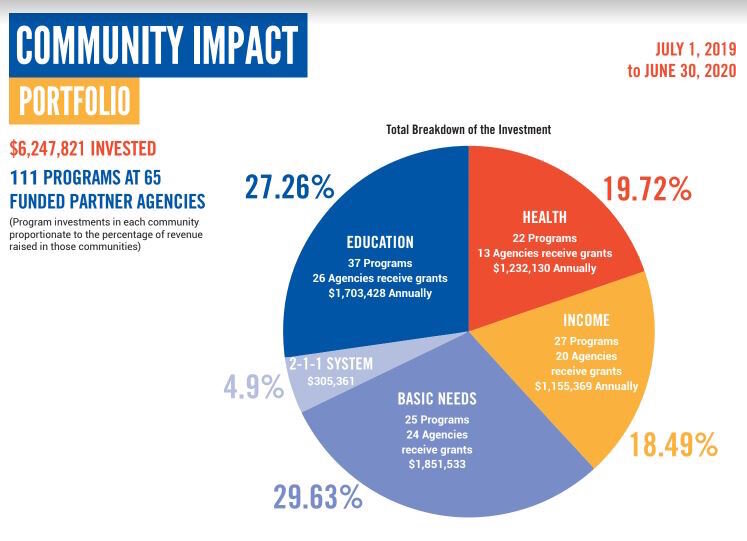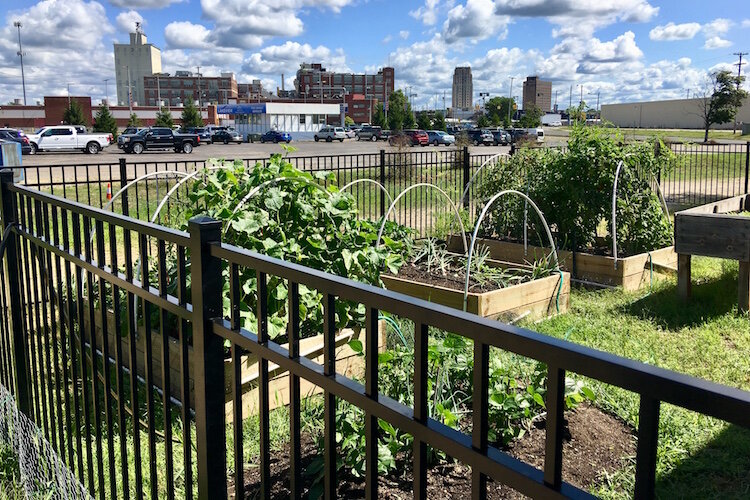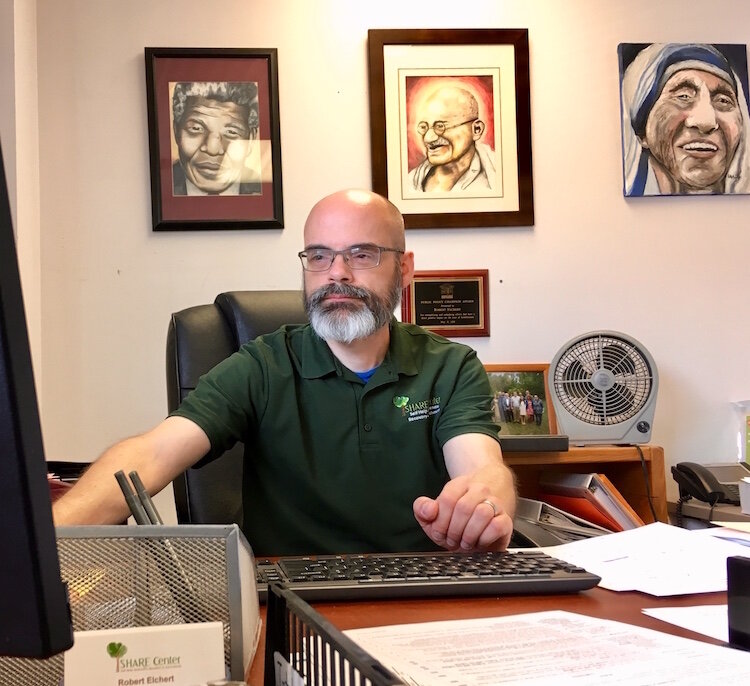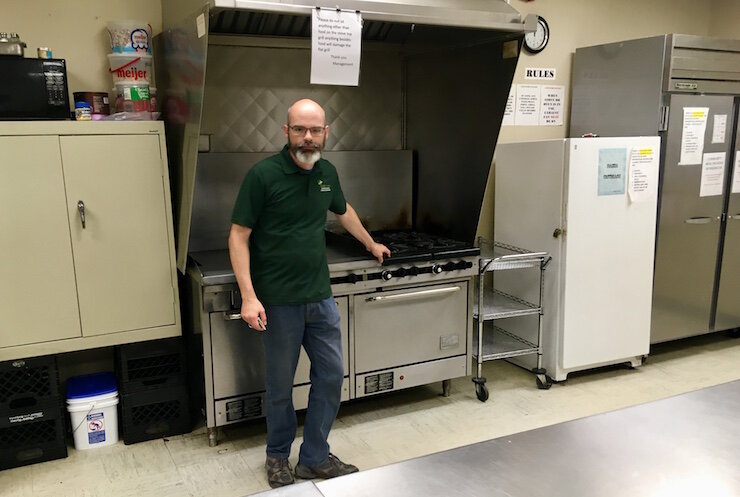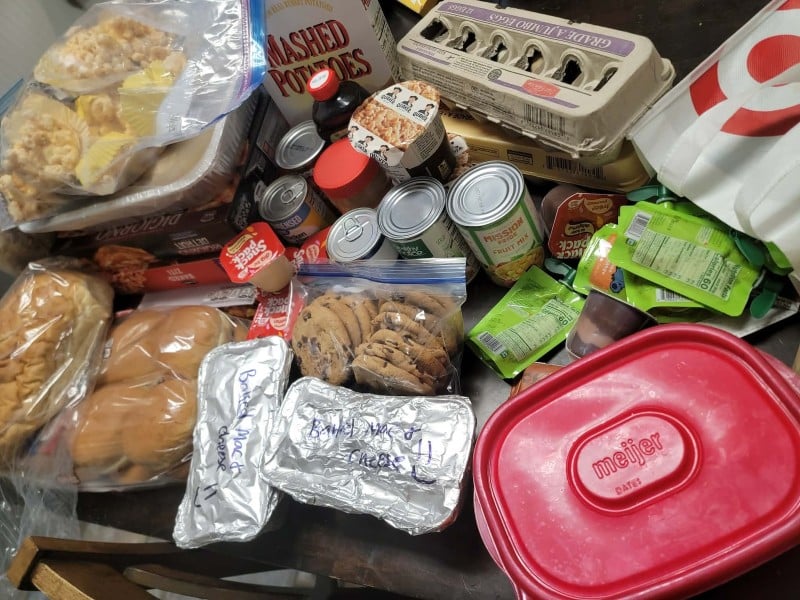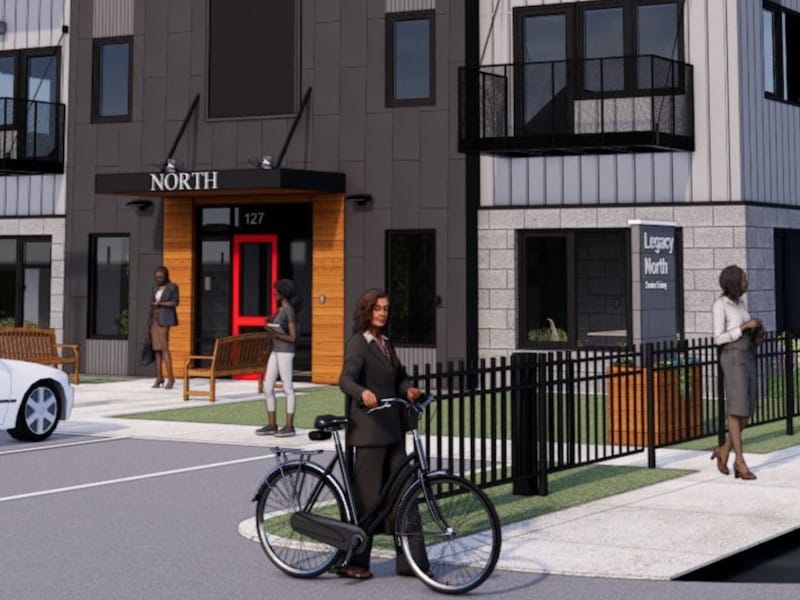United Way tackles complex issues by investing in four key areas
Annual giving of $6.2 million pushes progress in Battle Creek and Kalamazoo.
At the Share Center in Battle Creek, conversation is sometimes as quiet as a four-man card game. At other times, it’s as boisterous as a concession stand at a ball game.
But it’s usually pretty friendly and always non-stop.
“How you doing?” “That can’t be right” and “Did you know … ?” were part of the banter on a recent afternoon in the main room of the drop-in resource center at 120 Grove St., just south of downtown Battle Creek.
“The ultimate goal is to get people connected to the resources they need so they don’t have to keep coming back,” says Robert Elchert, executive director of the Share Center. (Share stands for Self Help Awareness Recovery & Enrichment.)
The drop-in center is a 9,000-square-foot converted automotive supply store that now provides resources and peer-to-peer counseling for individuals working to overcome poverty, addictions and mental health issues. It is also a comfortable place for the homeless, struggling military veterans, single mothers with needs and the hungry.
The center’s community meals program provides 75 meals per day to those in need during most of the year. That benefits most, if not all, of those who visit the drop-in center each day.
“It’s a little bit of everything,” Elchert says, describing the center’s patrons.
While a majority are homeless individuals, he says, “We’ve got a lot of folks who I can tell are on their way to work when they come in for breakfast. They’re on their way home from work when they come in for dinner. And they’re just folks who just don’t make enough money to afford a meal at that time for themselves or their families.”
The United Way of the Battle Creek and Kalamazoo Region provides the primary funding for the meals program. During the present funding year (July 1, 2019 through June 30, 2020), the community meals program is one of 111 programs at 65 area agencies that will receive a share of more than $6.2 million in grants from the United Way of the Battle Creek and Kalamazoo Region.
“This community meals program has been around for several years,” Elchert says. For most of that time, it was totally supported by the United Way. Last year, 20,830 meals were served, with 1,701 of those going to children (under 18), 2,570 to adults over 60, and 16,559 to people between ages 18 and 60.
An annual grant from the United Way now covers 85 to 90 percent of the cost, with the Battle Creek Community Foundation, area churches, and others providing the balance.
Without the United Way contribution, Elchert says, “There are families and individuals who would not have access to a served meal.”
Filling the basic needs of those who are struggling with addiction, homelessness, unemployment, and other issues has been one of four key focus areas for the regional United Way since 2016. The others focus areas are:
• Improving high school graduation rates and reducing racial and economic disparities in graduation rates. With strategic investments to improve kindergarten readiness, early grade reading proficiency and the social-emotional wellbeing of children, the United Way and partner organizations hope to improve the region-wide four-year high school graduation to 83 percent by 2030, with a focus on graduation rates for students of color and students from low-income families.
• Increasing the number of economically stable households. By helping low-income and working people to find stable and affordable housing, and providing workforce and income supports (such as access to child care, transportation, and financial literacy) the United Way hopes to elevate 8,500 households to economic stability by 2030.
• Improving family and infant health. The United Way has set a goal of reducing the infant mortality rate region-wide to 6.0 by 2025. That is, no more than six infant deaths in the first year of life per 1,000 live births. There is an especially urgent need to improve that rate among African-American families, who face worse infant mortality rates than many undeveloped countries.
• Ensuring a safety net is in place to help individuals and families obtain basic necessities in times of crisis. Efforts include making sure people get food, shelter, clothing, transportation, vital records, and other resources.
“We at the United Way are really trying to change the story in our community,” says Alyssa Stewart, vice president of impact and engagement for the United Way. “We are tackling complex issues that no one organization can do alone, making robust investments. We do that because these issues are so complex.”
This year, 60 programs will begin receiving a total of more than $3.7 million in strategic grants annually for three years, according to Stewart. Fifty programs involved in innovative, interim/supportive and basic needs will receive one-year grants totaling nearly $2.53 million.
“What we try to do at the Share Center is make sure that people’s basics needs are addressed,” Elchert says. “We have the food program, a clothing closet (clothes for those in need) and we have a monthly food pantry where people can get ready-to-eat food — food that doesn’t require cooking. And then there’s obviously safety. We give them a safe place to be.”
That is not unlike the work done 365 days a year at another United Way partner organization, Ministry with Community. It is located at 500 N. Edwards St., just north of downtown Kalamazoo.
“Our mission is to empower people to make positive life choices,” says executive director Kelly Henderson. “We do that by providing a daytime shelter, breakfast and lunch, and basic needs services.”
Those services include providing a place for people to take showers and do their laundry, and bus tokens or a bike to help those who have found work but are struggling to get there. More intensive services are also provided, such as helping the homeless and others obtain IDs and birth certificates, and helping them navigate their way to proper housing and other crisis intervention services.
“It’s different every day for every person who comes in,” says Henderson.
Since the nonprofit organization relocated to its current location on Edwards Street in September of 2016, it has increased its capacity for services. The total number of meals it serves annually has, for instance, grown by 30 percent, from 121,194 in 2015 to 157,549 in 2018. Showers and laundry services grew by nearly 22 percent from a combined 29,594 in 2015 to 36,017, she says.
Henderson says that although the United Way contribution accounts for less than 7 percent of Ministry with Community’s income, “the numerous ways they engage with our work is also incredibly impactful.”
“They provide educational and networking opportunities to nonprofit staff and the community-at-large,” she says. “Their staff volunteer to serve lunch to our members (the people who we serve). And they emerged as leaders during the homeless encampment (in 2018 in Kalamazoo). Ministry with Community was honored to partner with the United Way to host space for people experiencing homelessness to speak with local leaders in a trusted and safe space where a variety of voices were heard on pertinent issues.”
In a prepared statement, Chris Sargent, president, and chief executive officer of the regional United Way, said that investments his organization is making and its partnerships with dozens of area organizations are part of a collective effort “that makes a powerful difference.”
“By leading shared efforts, investing strategically and bringing together the people, resources and ideas that create change, we’re driving impact and transforming lives in lasting ways,” he says.
A complete summary of UWBCKR’s new grants, supported programs and initiatives is available at: changethestory.org/partners-and-programs.

